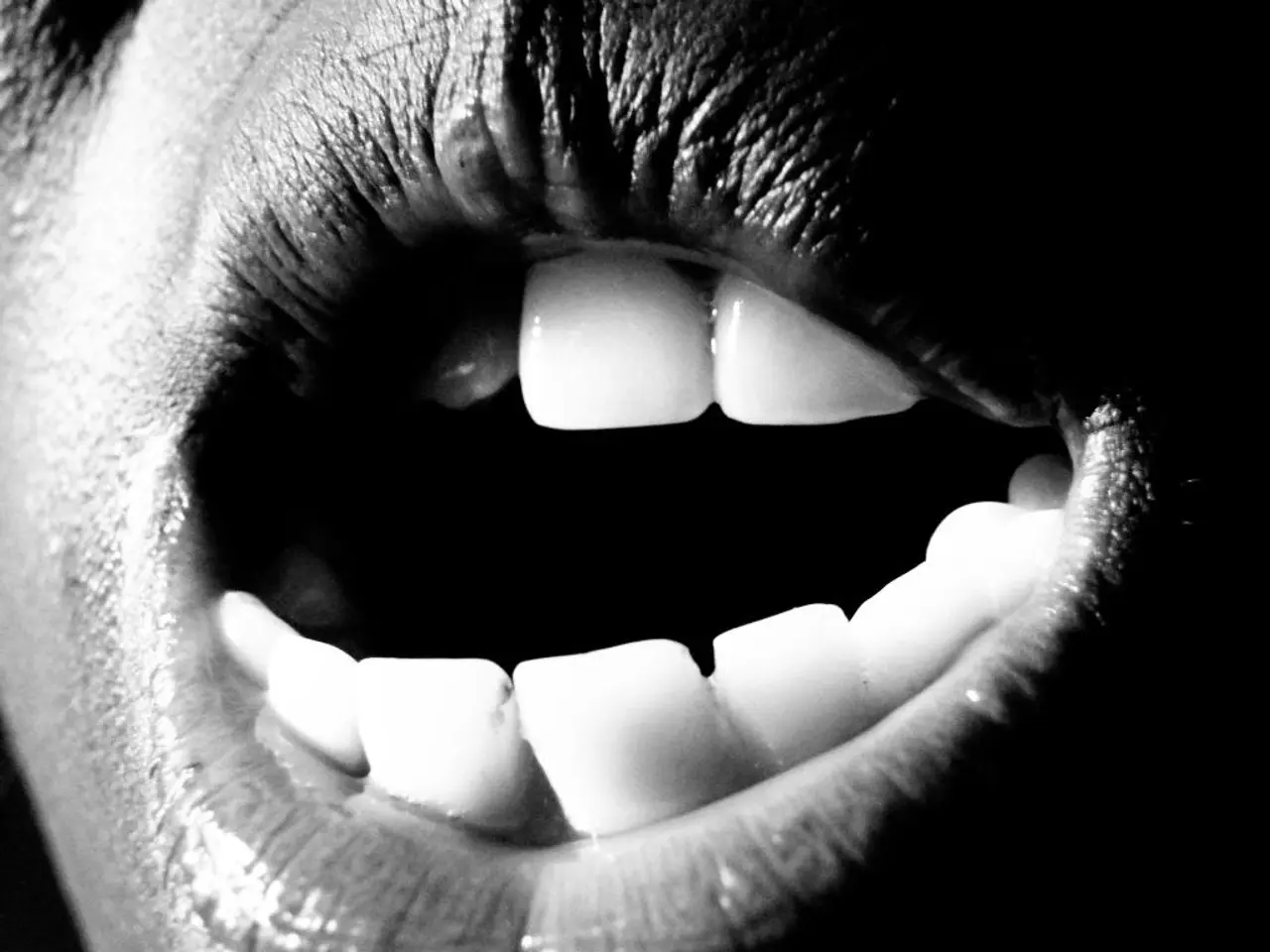Toothbrush Sequencing Dilemma: Floss Preceding or Following Toothbrushing
In the realm of oral health, two practices stand out as essential: flossing and brushing. Let's delve into the reasons why these habits are so crucial and learn the proper techniques for maintaining a healthy mouth.
Firstly, it's important to understand the role of tartar. Tartar, a hardened form of plaque, can make it challenging to floss or brush correctly, increasing the chances of tooth decay and gum disease.
Flossing, therefore, plays a vital role in our oral hygiene routine. By guiding the floss between two teeth and gently sliding it back and forth, we can dislodge food particles from hard-to-reach places in the mouth. This process helps remove plaque from between teeth, preventing it from calcifying and turning into tartar.
Flossing also helps fight bad breath by removing food debris from between teeth and in the gum line. Moreover, it can help prevent gum disease symptoms such as bad breath, loose teeth, painful chewing, red or swollen gums, bleeding or painful gums, and gums that pull away from teeth.
It's recommended to floss once a day, ideally before brushing, as studies suggest that doing so might make the fluoride in toothpaste more effective. To floss effectively, hold about 18 inches of dental floss tightly between your thumbs and forefingers, curve the floss into a C shape against one tooth when it reaches the gum line, and repeat this method on the rest of your teeth on both your top and bottom jaws, including molars.
After flossing, it's a good idea to brush your teeth. A soft-bristle toothbrush is gentler on delicate gums compared to medium- and hard-bristle toothbrushes. Brushing twice a day, once in the morning and once at night, for 2 minutes each time is essential for oral hygiene.
Brushing also helps remove bacteria and food particles, particularly from the tongue. Maintaining a healthy mouth might help reduce the risk of conditions such as heart disease, lung disorders, and early-term labor, which are associated with gum disease.
Lastly, visiting a dentist every 6 months is crucial for maintaining good oral health. If you experience symptoms like loose teeth, dental abscess, persistent toothache, cracked or chipped tooth, receding or bleeding gums, sensitivity to hot, cold, or sweet foods, fillings or crowns that are loose or have fallen out, dry socket (only associated with extractions), or any other unusual oral health issues, it's essential to seek professional help.
In conclusion, flossing and brushing are the cornerstones of good oral hygiene. By following the guidelines provided, you can ensure a healthy mouth and reduce the risk of various health issues associated with poor oral health. Remember, a healthy smile is just a floss and a brush away!
Read also:
- Overweight women undergoing IVF have a 47% higher chance of conceiving naturally post-weight loss
- Bonsai Trees from Evergreen Species: Exploring Growth Characteristics & Distinct Qualities
- What temperatures may make walking your canine companion uncomfortable?
- Title: Information About Beovu: Potency, Form, Usage, and Additional Details






